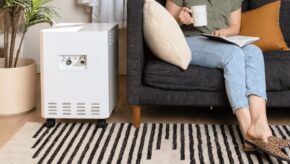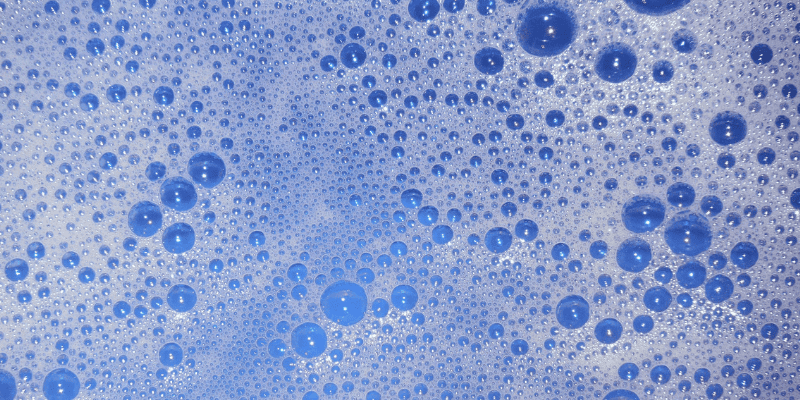Simply cleaning your clothing in the laundry can result in a variety of chemicals that can enter onto your clothes and impact not only the fabrics material that has been washed by this cleaning agent, but it may also have a lasting impact on your health – specifically your skin. The everyday laundry products that most households use to clean their garments can include laundry detergent, fabric softener, freshening beads, and a variety of other laundry care products that have become popular in recent years. However, before we use these products, we often neglect to look closer at the ingredient list of these products to determine the various chemical agents that are used to provide these products its cleaning capabilities in the washing machine. And these seemingly harmless laundry care products can harbor within them potential threats to human health.
In this article, we are going to learn more about sodium lauryl sulfate and determine how this commonly found laundry detergent chemical can impact human health when exposure occurs on the skin.
What is SLS (Sodium Lauryl Sulfate)
Sodium lauryl sulfate also referred to as SLS is a chemical agent that is commonly used in cleaning products due to its inherent ability to clean, according to Chemical Safety Facts. This chemical is labeled as an emulsifier and foaming agent that is commonly used in cosmetic products, along with industrial cleaners. The sodium lauryl sulfate has been used in a variety of products that are utilized in the home each and every day in the environment.
Sodium Lauryl Sulfate uses
There are several different uses of sodium lauryl sulfate, particularly in a home where it is utilized in a wide range of household cleaning and cosmetic products, like toothpaste, shampoo, shaving creams, bubble bath soap, laundry detergent, etc. This highly effective surfactant that is used to remove oily stains and residues can also be used in high concentrations in industrial products such as engine degreasers, floor cleaners, and car wash soaps. In addition, sodium lauryl sulfate has also been used as an emulsifier or thickener in food. The SLS food additive helps to make marshmallows and dried egg products, giving it that light and fluffy consistency when made.
Sodium Laureth Sulfate vs Sodium Lauryl Sulfate
When it comes to a widespread ingredient used in most personal care products, sodium Laureth sulfate, and sodium lauryl sulfate are two chemicals that are very commonly used. Both of these chemicals, although closely related in terms of the name and capabilities, there are some major differences that help to distinguish between these two chemical cleaning agents. While the chemical structure of these two chemicals is nearly identical, it differs by a single oxygen atom from SLES that is added during a process that is known as ethoxylation. This process thus converts the lauryl to laureth.
When SLS and SLES are used in these different household cleaning and cosmetic products, it has been documented that they both can cause irritants to both the skin and eyes. According to Dermveda, this irritation that is elicited from SLS and SLES can eventually lead to skin redness and dehydration, as well as an altering in the skin barrier function and the natural pH level of the skin. These degrees of irritation produced from sodium Laureth sulfate and sodium lauryl sulfate will vary from person-to-person, by the duration of skin contact, and even by the time of year.
Is Sodium Lauryl Sulfate safe?
As we discussed previously, one of the major risks of SLS exposure and use could be the development of skin irritation in certain individuals – this will depend on the amount of exposure, length of contact time, and even the time of the year that the exposure occurs. It was reported by Kosmea, that SLS can strip the skin of its natural oils which will, therefore, cause dry skin, irritation, and reactions. In addition, it can also be a very irritating agent on the eyes and lead to an inflammatory skin reaction that could be followed by itchy skin and scalp, eczema, and dermatitis.
SLS free laundry detergent alternatives
If you are someone who has sensitive skin that is easily impacted by the SLS chemical used in your regular, everyday detergent which can lead to the need to switch your laundry detergent to a more natural, less toxic detergent alternative. It is best to look for a safe laundry care product that states in the ingredients to be “sodium lauryl sulfate-free” and even finding one that is all-clear labeled which means it does not contain any harsh or toxic chemicals in its ingredients. There is a variety of safer, alternative laundry detergent for sensitive skin and laundry care products that contain fewer toxic ingredients including the omission of sodium lauryl sulfate in its chemical list.
The EnviroKlenz Laundry Enhancer is a specifically designed laundry additive that can be safely and effectively use in most wash loads to eradicate and expel chemical odors completely from the fabrics of the material(s). The EnviroKlenz Laundry Enhancer works alongside your normal everyday detergent to enhance its ability to remove those tough odors that would normally be impossible to remove, and best of all EnviroKlenz Laundry Enhancer contains no masking agents or fragrances providing you with a clean and odor-free results.
Laundry Enhancer Liquid
✓ Works to remove chemical & malodors from all machine safe fabrics
✓ Easy and effective application, used in conjunction with a non-scented laundry detergent
✓ Patented earth mineral technology works to attack VOCs and break them down on a compound level
✓ No chemicals or masking agents
Article Sources:
- Chemical Safety Facts: Sodium Lauryl Sulfate (link)
- Dermveda: Sodium Laureth Sulfate or Sodium Lauryl Sulfate? (link)
- Kosmea: What is Sodium Lauryl Sulfate and Why Should We Avoid it? (link)
- Livestrong: Sodium Laureth Sulfate Allergy (link)
EnviroKlenz® Medical Disclaimer:
“Any information that is provided on this website is not for the use by any commercial or personal entity without expressed written consent of the blog author. The material and statements illustrated within this blog are not intended to diagnose, treat, cure, or prevent any diseases or medical conditions. Nor does the author in any way guarantee or validate the validity, totality, or efficacy of any claims and will therefore not be held responsible for the content of any claims. Always consult your medical physician for any specific medical advice or recommendations.”








